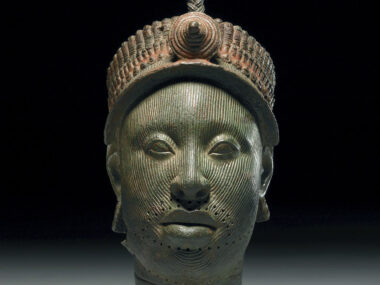Introduction
Music is a universal language that transcends boundaries and unites people across cultures. Each music genre carries its own unique cultural significance, reflecting the history, values, and social dynamics of the communities from which it originates. Examining the cultural significance of various music genres offers insights into the ways in which music influences and is influenced by cultural contexts. This exploration covers a diverse range of music genres from around the world, highlighting their origins, characteristics, and cultural impacts.

African Music Genres
- Afrobeat (Nigeria): Afrobeat, pioneered by Fela Kuti in the 1960s, is a genre that combines traditional African music with jazz, funk, and highlife. Its rhythmic complexity and socially conscious lyrics reflect the struggles and aspirations of post-colonial African societies. Afrobeat has become a global phenomenon, influencing various music styles worldwide.
- Highlife (Ghana): Highlife originated in Ghana in the early 20th century, blending indigenous rhythms with Western instruments and harmonies. It became a symbol of African independence and modernity, resonating with the cultural pride of newly independent African nations. Highlife continues to influence contemporary African music.
- Mbira Music (Zimbabwe): Mbira music, played on the traditional thumb piano, holds deep spiritual and cultural significance in Zimbabwean society. It is often used in religious ceremonies, storytelling, and social gatherings. The mbira is considered a conduit to the ancestral world, reflecting the interconnectedness of music, spirituality, and community.
- Kwaito (South Africa): Emerging in the 1990s, Kwaito is a genre that combines house music, hip-hop, and traditional African sounds. It became the voice of the youth in post-apartheid South Africa, reflecting their experiences and aspirations. Kwaito’s popularity highlights the dynamic nature of cultural expression in a rapidly changing society.
Asian Music Genres
- Raga (India): Raga, a fundamental concept in Indian classical music, is a framework for melodic improvisation. Each raga is associated with specific emotions, times of day, and seasons, reflecting the intricate relationship between music and the natural and spiritual world. Indian classical music, both Hindustani and Carnatic, uses raga to convey profound philosophical and spiritual ideas.
- Gamelan (Indonesia): Gamelan music, characterized by its intricate interlocking rhythms and melodies played on metallophones and gongs, is central to Indonesian cultural and religious ceremonies. It reflects the communal values of Indonesian society, where ensemble performance emphasizes collective harmony over individual virtuosity.
- K-Pop (South Korea): K-Pop, or Korean pop music, is a global phenomenon that blends various musical styles, including pop, hip-hop, R&B, and electronic dance music. Its rise reflects South Korea’s cultural export strategy and the genre’s ability to resonate with global youth culture through its polished production, catchy melodies, and elaborate performances.
- Enka (Japan): Enka is a genre of sentimental ballads that emerged in post-war Japan. It is characterized by its melancholic melodies and themes of love, loss, and nostalgia. Enka reflects the social and emotional landscape of Japan’s post-war era and continues to be a poignant expression of Japanese cultural identity.
European Music Genres
- Flamenco (Spain): Flamenco, with its roots in Andalusian, Gypsy, and Moorish cultures, is a genre that combines singing, guitar playing, dance, and percussion. It expresses deep emotions through its intense rhythms and passionate performances, embodying the soul and cultural history of southern Spain.
- Chanson (France): Chanson, a genre of French lyrical music, often features poetic and socially conscious lyrics. It reflects the intellectual and artistic traditions of French culture, with notable artists like Edith Piaf and Jacques Brel shaping its legacy. Chanson remains a vital part of French musical heritage.
- Fado (Portugal): Fado is a genre of Portuguese music characterized by its mournful melodies and themes of longing, fate, and the sea. Originating in Lisbon’s urban working-class neighborhoods, fado captures the essence of Portuguese saudade—a deep emotional state of nostalgic longing.
- Polka (Central Europe): Polka, a lively dance music genre, originated in the 19th century in Central Europe. It became a symbol of national pride and cultural identity for various Central European countries, particularly Poland and the Czech Republic. Polka’s infectious rhythm and celebratory nature make it a staple at social gatherings and festivals.
American Music Genres
- Blues (USA): The blues, originating in the African American communities of the Deep South, is a genre rooted in the experiences of hardship, resilience, and hope. Its distinctive 12-bar structure and emotive lyrics have influenced countless other genres, including jazz, rock, and soul. The blues is a profound expression of the African American cultural and historical experience.
- Salsa (Cuba/Puerto Rico): Salsa, a genre that emerged in New York City among Cuban and Puerto Rican immigrants, combines Afro-Cuban rhythms with jazz, funk, and R&B. It represents the cultural fusion and vibrancy of Latin American communities in the diaspora, and its lively rhythms and danceable beats have made it popular worldwide.
- Reggae (Jamaica): Reggae, with its roots in Jamaican ska and rocksteady, gained international recognition through the music of Bob Marley and others. Its characteristic offbeat rhythm and socially conscious lyrics reflect the struggles and aspirations of Jamaican society. Reggae’s message of peace, love, and resistance has resonated globally.
- Country (USA): Country music, with its roots in the folk traditions of the rural Southern United States, tells stories of everyday life, love, and hardship. It reflects the cultural values and experiences of America’s heartland, evolving from simple acoustic performances to a diverse genre with various sub-styles.
Oceanian Music Genres
- Didgeridoo Music (Australia): The didgeridoo, a traditional wind instrument of the Aboriginal people of Australia, produces a deep, resonant sound. Its music is used in ceremonies and storytelling, reflecting the spiritual connection between the Aboriginal people and their land.
- Haka (New Zealand): The haka is a traditional Māori dance and chant that conveys strong emotions and communal strength. It is performed on significant occasions, including welcoming ceremonies, funerals, and sports events, embodying Maori cultural identity and heritage.
- Polynesian Music (Pacific Islands): Polynesian music, characterized by its harmonic singing and use of traditional instruments like the ukulele and drums, is an integral part of social and religious ceremonies. It reflects the communal and spiritual life of Polynesian cultures, celebrating their connection to nature and ancestors.
- Slack-Key Guitar (Hawaii): Slack-key guitar music, with its open tunings and fingerpicking style, is a hallmark of Hawaiian culture. It expresses the laid-back, island lifestyle and the deep connection of the Hawaiian people to their land and traditions.
Middle Eastern Music Genres
- Oud Music (Middle East): The oud, a pear-shaped stringed instrument, is central to classical Arabic, Persian, and Turkish music. Its rich, melodic sound and complex playing techniques reflect the intricate musical traditions of the Middle East, often used in both secular and sacred contexts.
- Raï (Algeria): Raï, a genre originating from the coastal city of Oran in Algeria, blends traditional Bedouin folk music with modern influences like jazz, rock, and reggae. It became a voice for social and political commentary, particularly among the youth, and reflects the cultural dynamism of North Africa.
- Persian Classical Music (Iran): Persian classical music, with its modal system of Dastg
ah, is deeply rooted in Iran’s cultural and spiritual history. It is characterized by its improvisational nature and emotional expression, often performed in intimate settings and conveying profound philosophical themes.
- Mizrahi Music (Israel): Mizrahi music, which blends Middle Eastern, North African, and Mediterranean influences, is popular among Israel’s Jewish communities from these regions. It reflects the cultural diversity of Israeli society and the fusion of traditional and modern elements.
Conclusion
The cultural significance of music genres is a testament to the rich and diverse tapestry of human expression. Each genre offers a unique lens through which we can understand the history, values, and social dynamics of the communities that create and sustain them. From the spiritual depth of mbira music in Zimbabwe to the global appeal of K-Pop, from the soulful blues of the American South to the poignant fado of Portugal, music is a powerful medium for cultural identity and continuity. By examining these genres, we gain a deeper appreciation of the ways in which music shapes and is shaped by cultural contexts, serving as a vital conduit for human connection and understanding.










